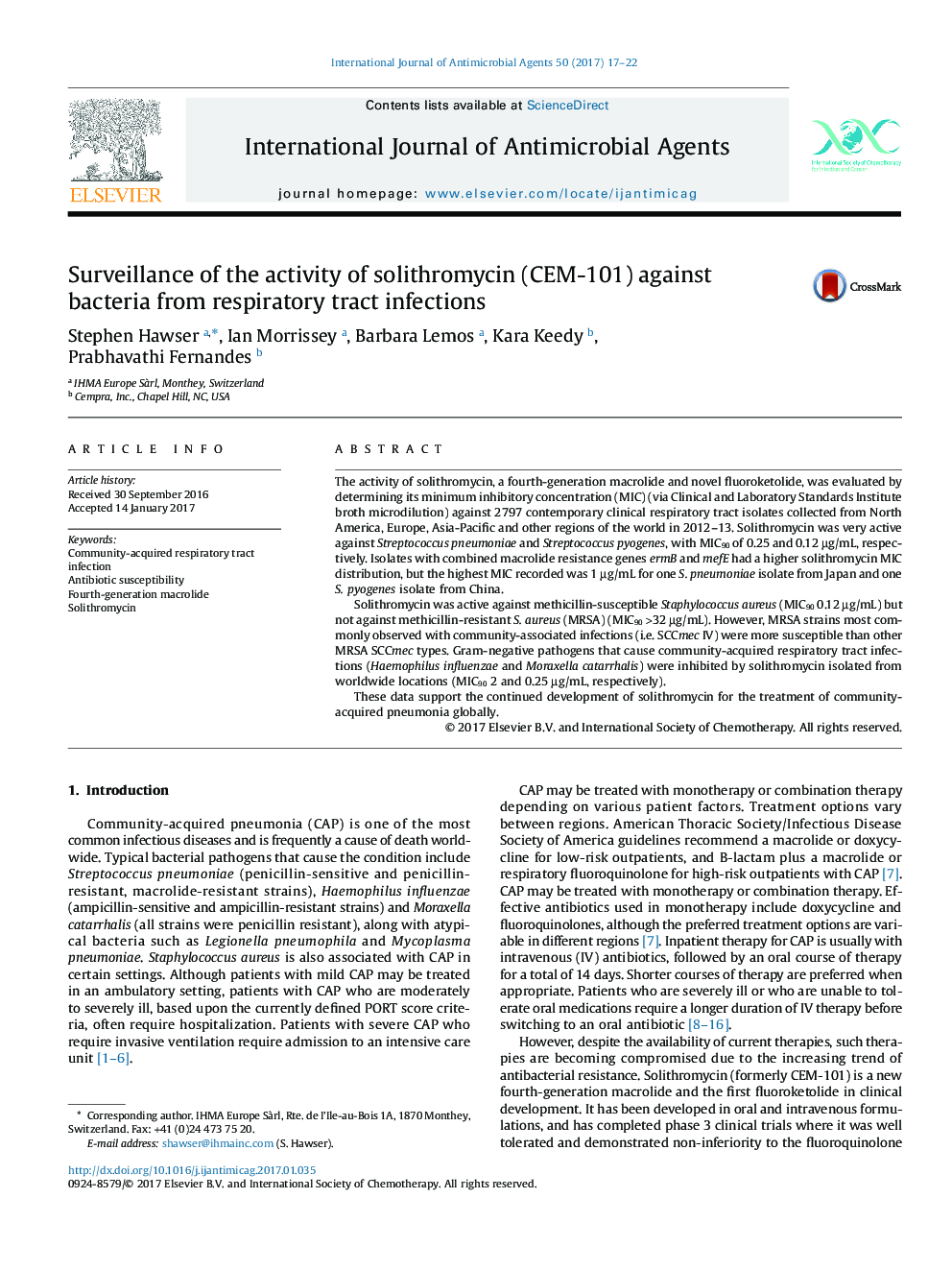| Article ID | Journal | Published Year | Pages | File Type |
|---|---|---|---|---|
| 5666995 | International Journal of Antimicrobial Agents | 2017 | 6 Pages |
â¢The activity of the antibiotic solithromycin was investigated against bacteria from respiratory tract infections (RTI).â¢Solithromycin exhibited excellent activity against major causative RTI pathogens.â¢Further monitoring of the activity of solithromycin against RTI pathogens is merited.
The activity of solithromycin, a fourth-generation macrolide and novel fluoroketolide, was evaluated by determining its minimum inhibitory concentration (MIC) (via Clinical and Laboratory Standards Institute broth microdilution) against 2797 contemporary clinical respiratory tract isolates collected from North America, Europe, Asia-Pacific and other regions of the world in 2012-13. Solithromycin was very active against Streptococcus pneumoniae and Streptococcus pyogenes, with MIC90 of 0.25 and 0.12âµg/mL, respectively. Isolates with combined macrolide resistance genes ermB and mefE had a higher solithromycin MIC distribution, but the highest MIC recorded was 1âµg/mL for one S. pneumoniae isolate from Japan and one S. pyogenes isolate from China.Solithromycin was active against methicillin-susceptible Staphylococcus aureus (MIC90 0.12âµg/mL) but not against methicillin-resistant S. aureus (MRSA) (MIC90 >32âµg/mL). However, MRSA strains most commonly observed with community-associated infections (i.e. SCCmec IV) were more susceptible than other MRSA SCCmec types. Gram-negative pathogens that cause community-acquired respiratory tract infections (Haemophilus influenzae and Moraxella catarrhalis) were inhibited by solithromycin isolated from worldwide locations (MIC90 2 and 0.25âµg/mL, respectively).These data support the continued development of solithromycin for the treatment of community-acquired pneumonia globally.
